This Indigenous-owned Property in Canada Has a Boutique Lodge, Cultural Gatherings, Sustainability Programs, and New Glamping Sites for Stargazing
Métis Crossing is one of the first destinations in the world to showcase Métis cultural pride.
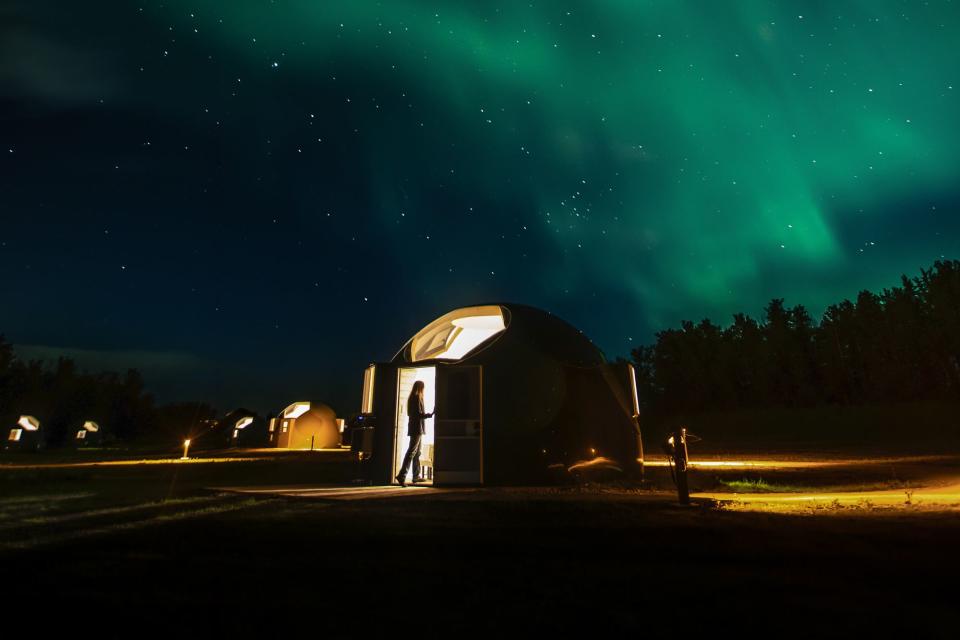
Amber Bracken
Sky Watching Domes at Métis Crossing, an Indigenous-owned cultural center in Alberta, Canada.The sky is big in Smoky Lake, Alberta — so big you can catch retreating storms and rays of sun in one glance. The old prairie saying about being able to see your dog run away for three days came to mind as I sat in Len Hrehorets’s truck at the Visions, Hopes and Dreams at Métis Crossing Wildlife Park. Through the open windows, we watched bison graze. The soft-spoken rancher switched on country music and turned up the volume. “Keeps ’em calm,” he said. The bison watched us with mild interest as they ambled past. Spring calves skittered playfully between mothers and aunties, whose thick, rectangular bodies didn’t look entirely stable on their spindly legs. I don’t speak bison, but they did seem to be enjoying the radio’s cowboy drawl.
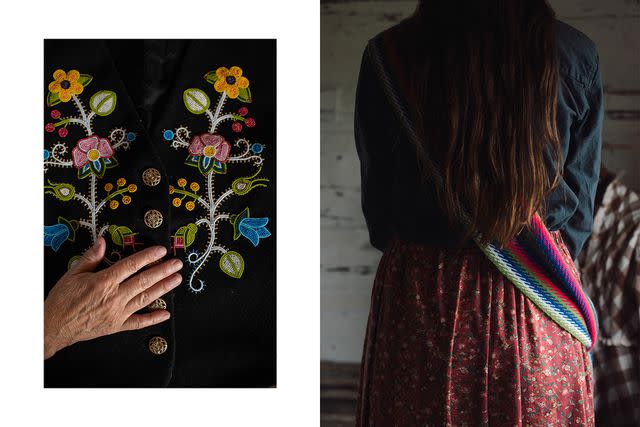
Amber Bracken
From left: A sample of traditional Métis tufting and embroidery, which travelers can try in a variety of workshops offered on the property; Breena Johnson, who organizes cultural experiences for the park, wears a handwoven Métis sash.I had traveled from my home in Vancouver to the province of Alberta to spend a couple of days at Métis Crossing, a 688-acre stretch of Indigenous-owned land that includes the wildlife park, located on the North Saskatchewan River. For most of the 20th century, the area was organized into narrow lots where Métis families could access water, fields, and forest; now it holds a cultural center, a 40-room lodge, campgrounds, and Sky Watching Domes, glamping-style accommodations that debuted this summer. Sustainability-focused projects such as a solar farm and a permaculture garden are also in the works.
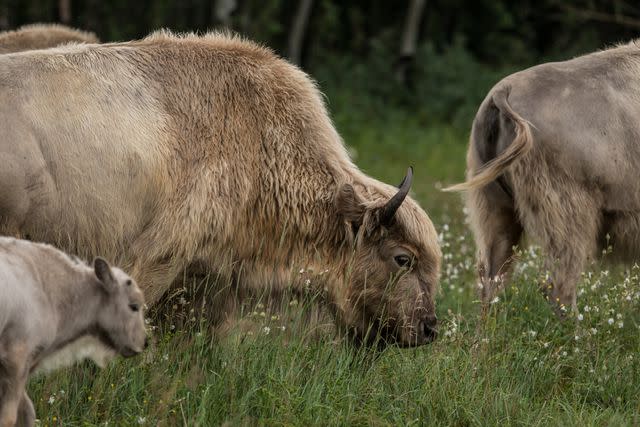
Amber Bracken
White bison at Visions, Hopes and Dreams at Métis Crossing Wildlife Park.The Métis people are one of the three Indigenous groups in Canada, along with First Nations and Inuit. The community was formed during the 1700s by the descendants of marriages between European fur traders and First Nations people, who evolved into a unique ethnic group. After more than a century of repression, the Métis people today find themselves on the verge of new opportunity: in Canada, Indigenous tourism is growing so rapidly that it’s projected to contribute more than $125 million to Alberta’s economy in 2024.
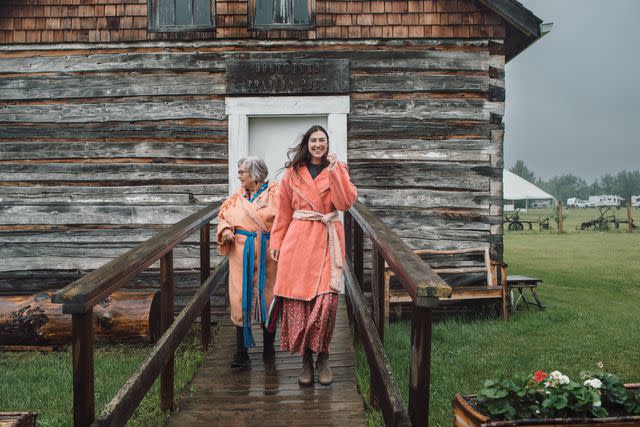
Amber Bracken
At Métis Crossing, travelers might meet artisan and knowledge-holder Lilyrose Meyers (left) and cultural experiences supervisor Breena Johnson.Métis Crossing is one of the first destinations in the world to showcase Métis cultural pride. Helmed by powerhouse CEO Juanita Marois, its purpose is to celebrate and educate Indigenous and non-Indigenous visitors on Métis heritage and contemporary culture — and, crucially, act as an incubator for new ideas.
Back in 2020, Marois partnered with Hrehorets, who is not Indigenous, to bring bison to this part of Alberta and help them thrive. The animals are known as li bufloo in the Métis Michif language, which in Alberta is a mix of mostly French and Cree. They were central to the Métis economy and politics, in addition to being sustenance. In the wildlife park, which spans 320 acres and is located a five-minute drive from the lodge, they’re a keystone species, meaning their presence benefits all other forms of life in their ecosystem. As they dig down with their hooves and make space for plants, “they’re naturally sharing and spreading seeds across the plains,” Marois told me as we walked the lodge grounds. Birds line their nests with bison fur, and prairie dogs take advantage of the shorter grass found in grazing areas to dig their burrows.
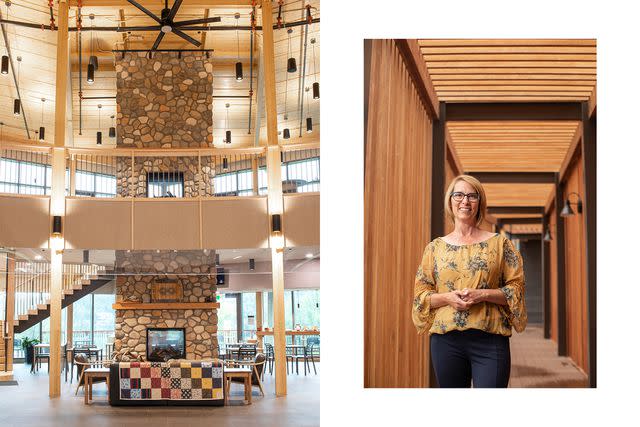
Amber Bracken
From left: The airy lobby of Métis Crossing Lodge; Juanita Marois, the CEO of Métis Crossing, in Smoky Lake, Alberta.For this decidedly urban Métis girl, li bufloo were a highlight of my visit, but there were many activities on offer, too. Métis knowledge-holder and teacher Lilyrose Meyers showed me the basics of tufting, a traditional craft for which moose or caribou hair is gathered, dyed, and stitched to create three-dimensional art or to decorate clothing. As my clumsy fingers struggled to keep up, she inevitably asked, “Where are you from?” The question sounds simple, but it’s an invitation to share details of our ancestry: Métis love to talk about lineage. While I dutifully listed family names aloud, she pulled out her cell phone to show me historical photos. The feeling of inclusion was powerful — and made up for the fact that I am clearly not a born tufter. Métis also love to laugh; Meyers and I joked a lot. By the time we were finished the sun was low in the sky, and I left Meyers to find where I’d be spending the night.
The Lodge at Métis Crossing, designed by Métis architect Tiffany Shaw-Collinge, strikes a balance between high design and homespun comfort. The lobby has vaulted ceilings and sweeping views of the grounds and that big Alberta sky. Presiding over it all is a massive stone fireplace. My room had a handmade quilt on the bed and a private patio facing the river.
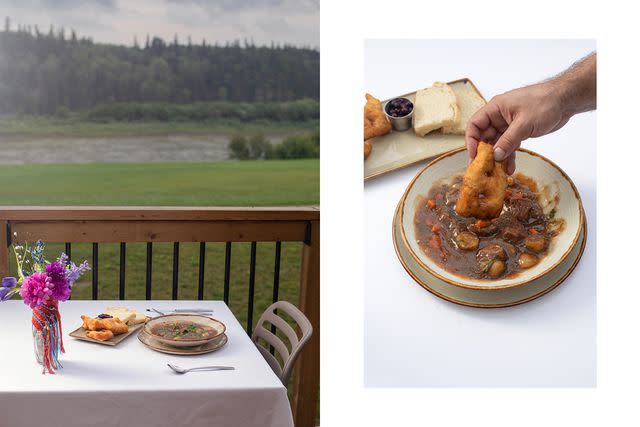
Amber Bracken
From left: Bison stew and bannock bread on the porch, with the North Saskatchewan River in the background; the stew and bread showcase traditional flavors at Métis Crossing.Each day, breakfast was served in a small café on the ground floor, where staffer Beth Braucht brought me cappuccinos. The meals were unfussy and delicious, with local touches like saskatoon-berry coulis, bison sausage, and bannock, a type of bread that was introduced by European fur traders in the 18th century and adopted into Métis culture.
While visitors can comfortably cocoon in their rooms, the property is clearly structured around group events, with an outdoor performance stage and plenty of legroom for dancing, both indoors and out. The Cultural Gathering Center has spaces for craft demonstrations and talks; the dining hall can easily seat hundreds. In the summer, visitors can take a guided canoe tour or picnic on the lawn, and in the winter there’s cross-country skiing and snowshoeing. During my stay, crews were preparing for Métis Fest, a June celebration that typically attracts around 2,000 people — Indigenous and non-Indigenous — from across Canada.
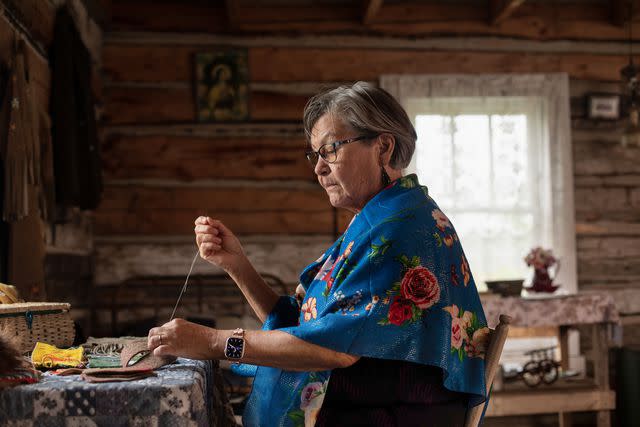
Amber Bracken
Knowledge-holder Lilyrose Meyers demonstrates Métis embroidery.On my last day, I walked a few minutes down a quiet path to take photos of the new Sky Watching Domes. Set in a clearing, the shiny green-and-white structures looked a bit like a friendly Mars colony: six domes with king beds and two family suites, all with plenty of space between them.
While the domes are designed for year-round use, their igloo-like shape suggests a coziness factor ideal for cold weather, with the viewing windows set high on the ceilings for maximum privacy. Here in the land of the big skies, 75 miles away from the nearest city lights in Edmonton, stargazing is a prime activity — at the right time of year, guests might be lucky enough to see the aurora borealis. “Our nights are long and our days are short,” Marois said of winters in Alberta. “We wanted to build these domes so that people have a chance to connect with the land and sky.”
When the temperatures drop and the prairie winds whistle down the North Saskatchewan, a night under the stars in the place of our ancestors may conjure up stories of trappers, hunters, traders, and farmers. Or it might just lull you gently to sleep.
A version of this story first appeared in the October 2023 issue of Travel + Leisure under the headline "A Long Look Forward."
For more Travel & Leisure news, make sure to sign up for our newsletter!
Read the original article on Travel & Leisure.

